Welcome to another new blog by Jenny Jinya. The purpose of this blog is to inform people that it is not good to keep non-domestic animals in cages. There are several reasons why keeping non-domestic animals in cages is not good for them. Many non-domestic animals, such as whales and parrots, have strong abilities to hunt, travel, and explore. A cage environment does not allow them to fulfill these basic needs. We are going to explore such issues in detail in this blog.
Non-Domestic Animals
As we know, the Internet is filled with thousands of comic artists. But no one has the potential to raise a voice for animals like the one and only Jenny Jinya. She is the true advocate for animals and always talks about animal cruelty, abuse, and mistreatment. Her several comics depict the consequences of neglecting and mistreating animals. These can serve as a powerful reminder of the responsibility that comes with pet ownership. They encourage viewers to treat animals with respect and care.
When we talk about how she got interested in creating comics about animals, she says that she has a true love for animals in her heart. But she was not perfect at drawing. Her love for animals motivated her to pursue studies in communication design at the BTK Academy in Berlin. She starts collaborating with students to likely master her skills in creating interesting and engaging visuals. That’s how this academic experience masters her artistic skills.
Social Media Profile: Jenny Jinya
Let’s look at some of the most beautiful artworks by Jenny Jinya that show that parrots and whales should not be kept in cages as they are not domestic animals.
#1. Parrots Are Not Domestic Animals
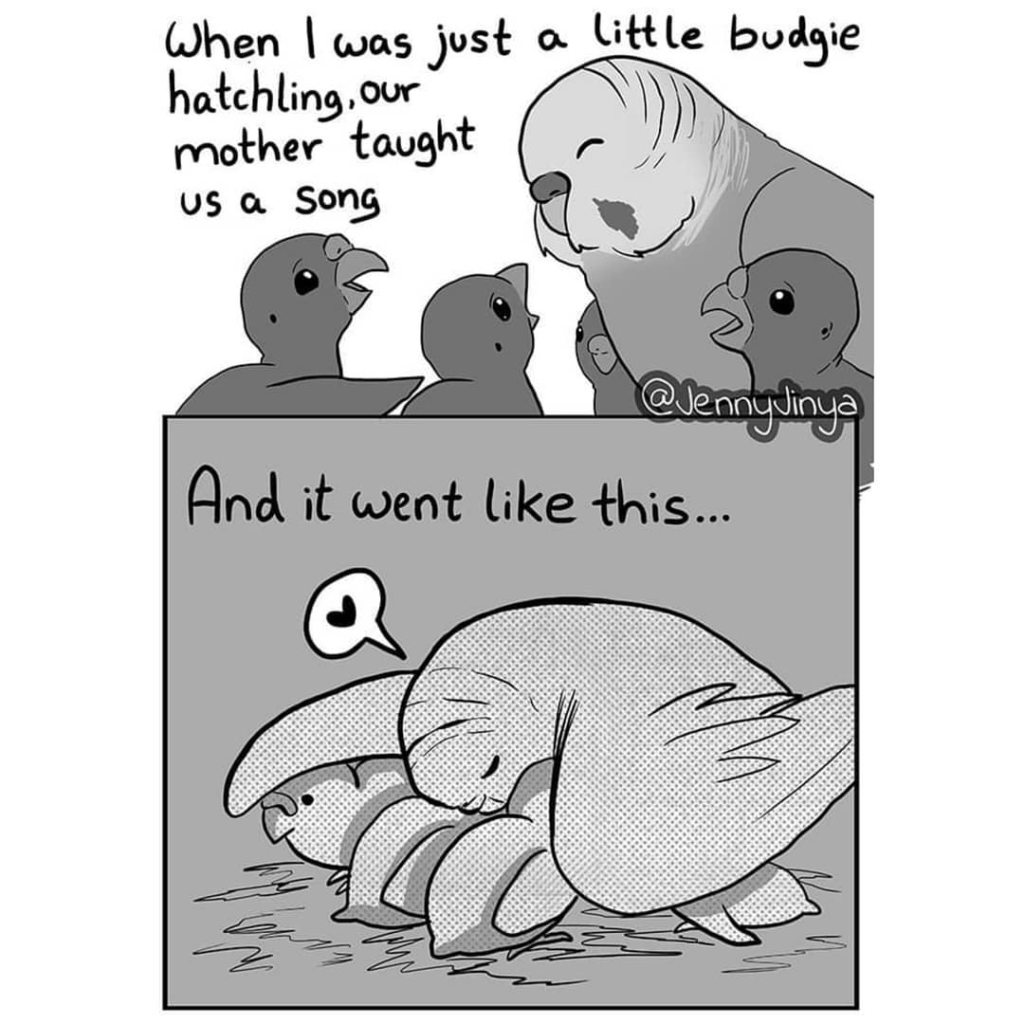
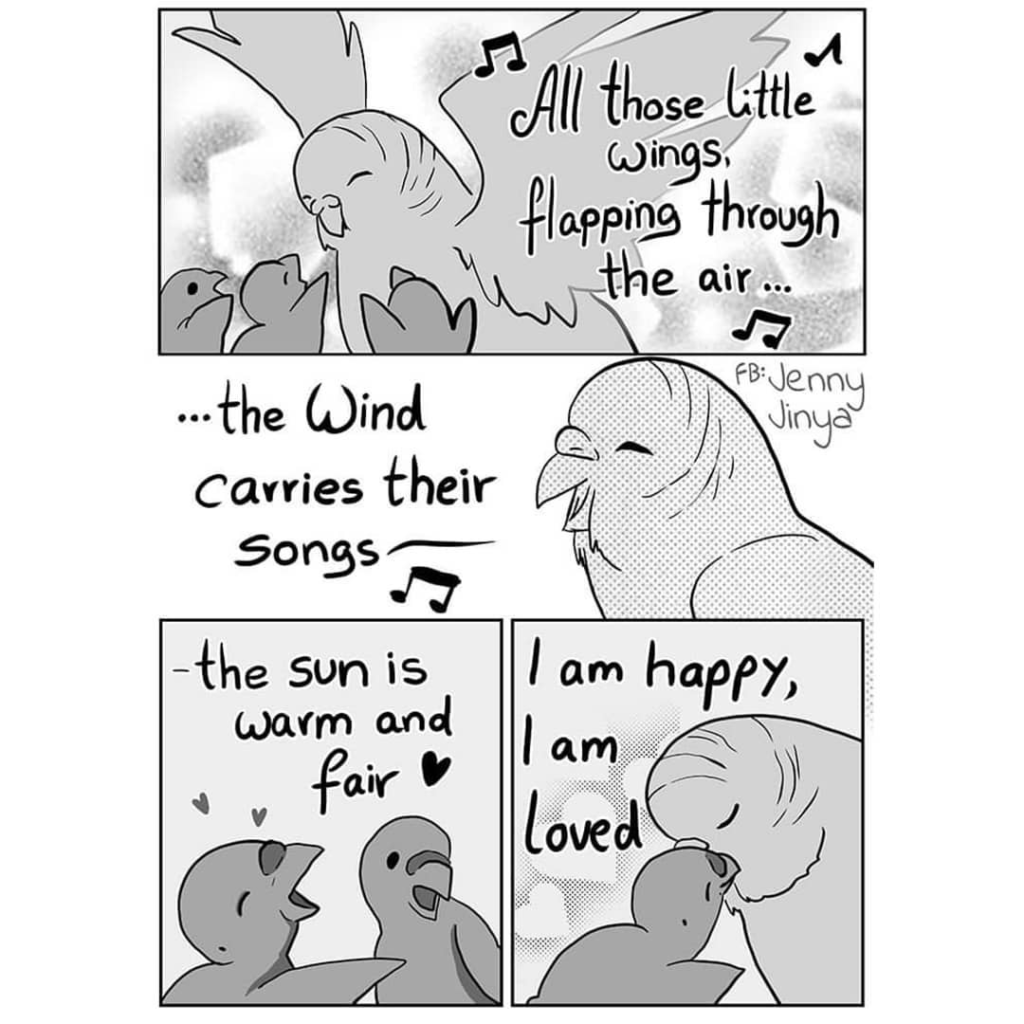
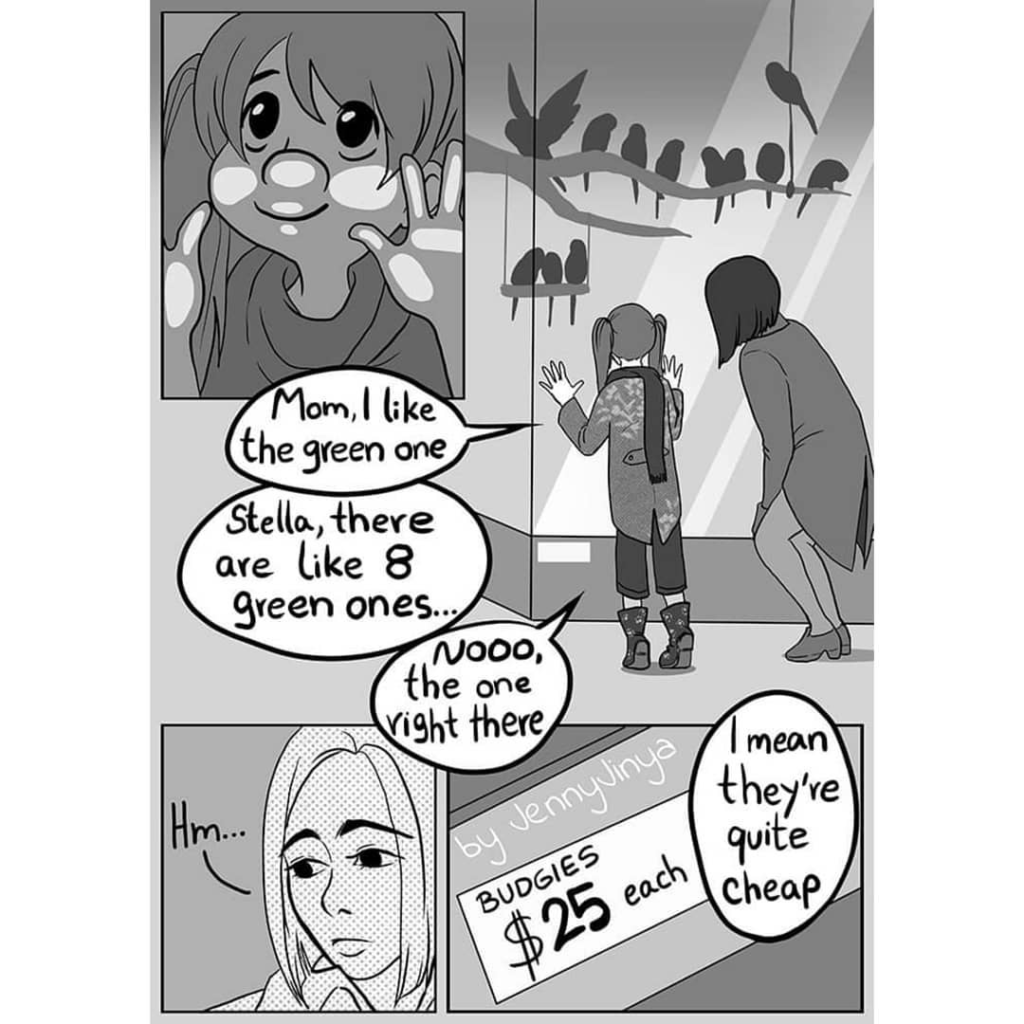
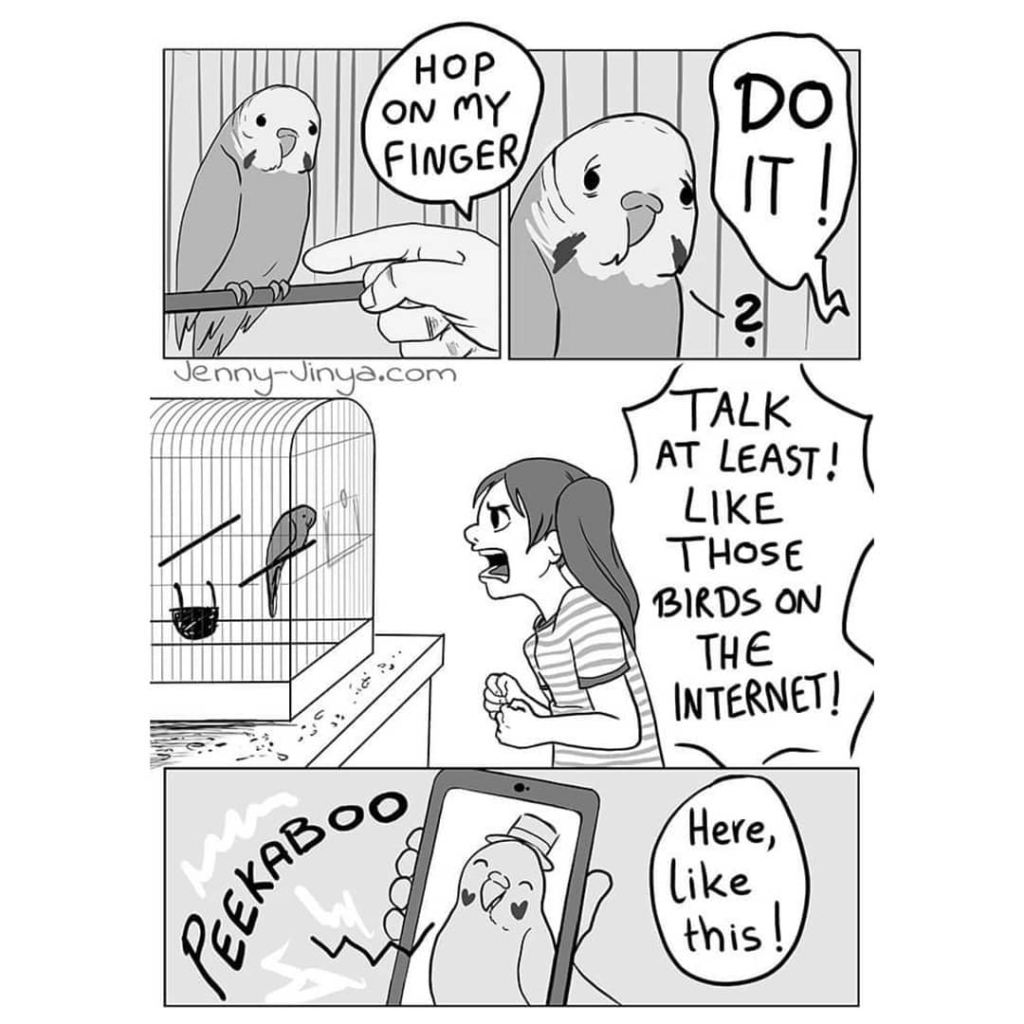
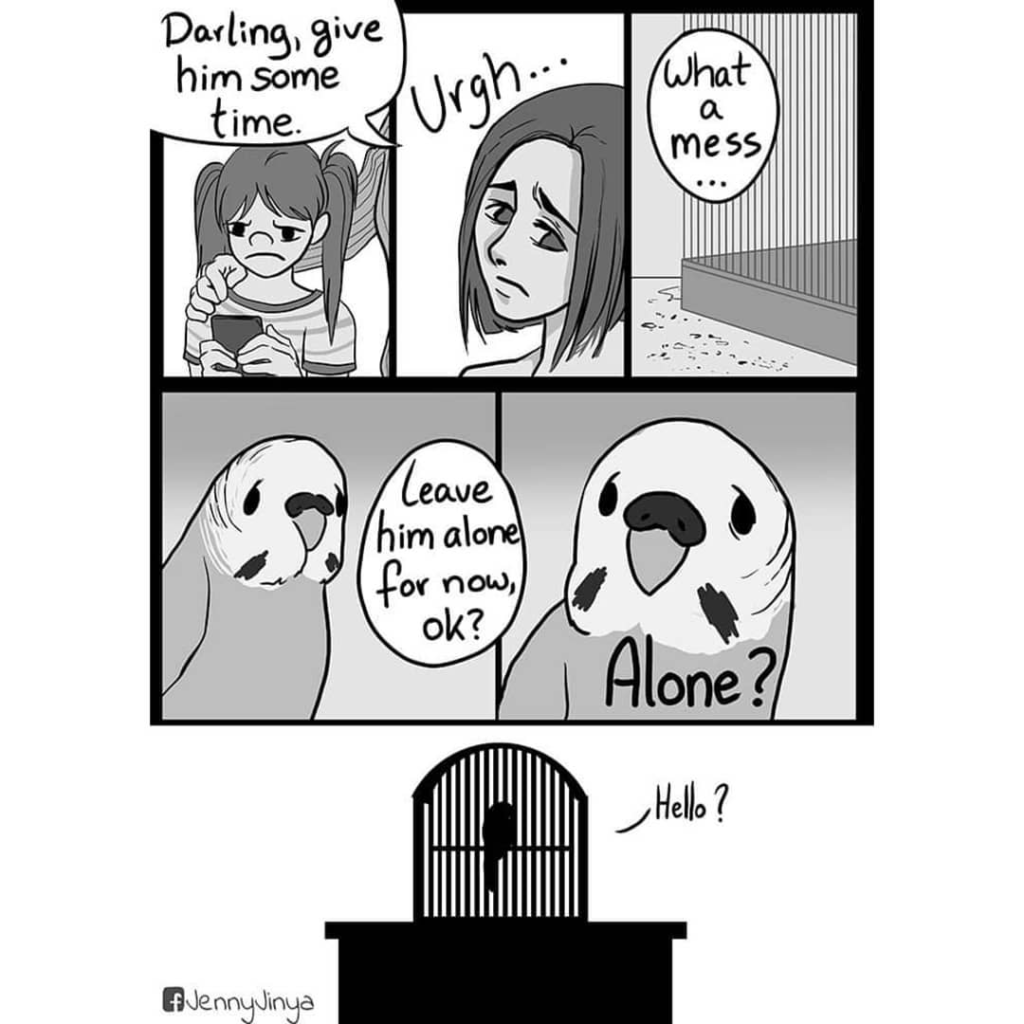
Jenny Jinya wants to say that a process of selective breeding lasting thousands of years is required for domestication. An animal’s behavior, physiology, and dependence on people are all changed by this process. Dogs were domesticated for many years. On the other hand, parrots have not experienced this domestic environment. Birds with a strong natural desire to fly are parrots. Even big cages greatly restrict their ability to participate in this natural behavior.



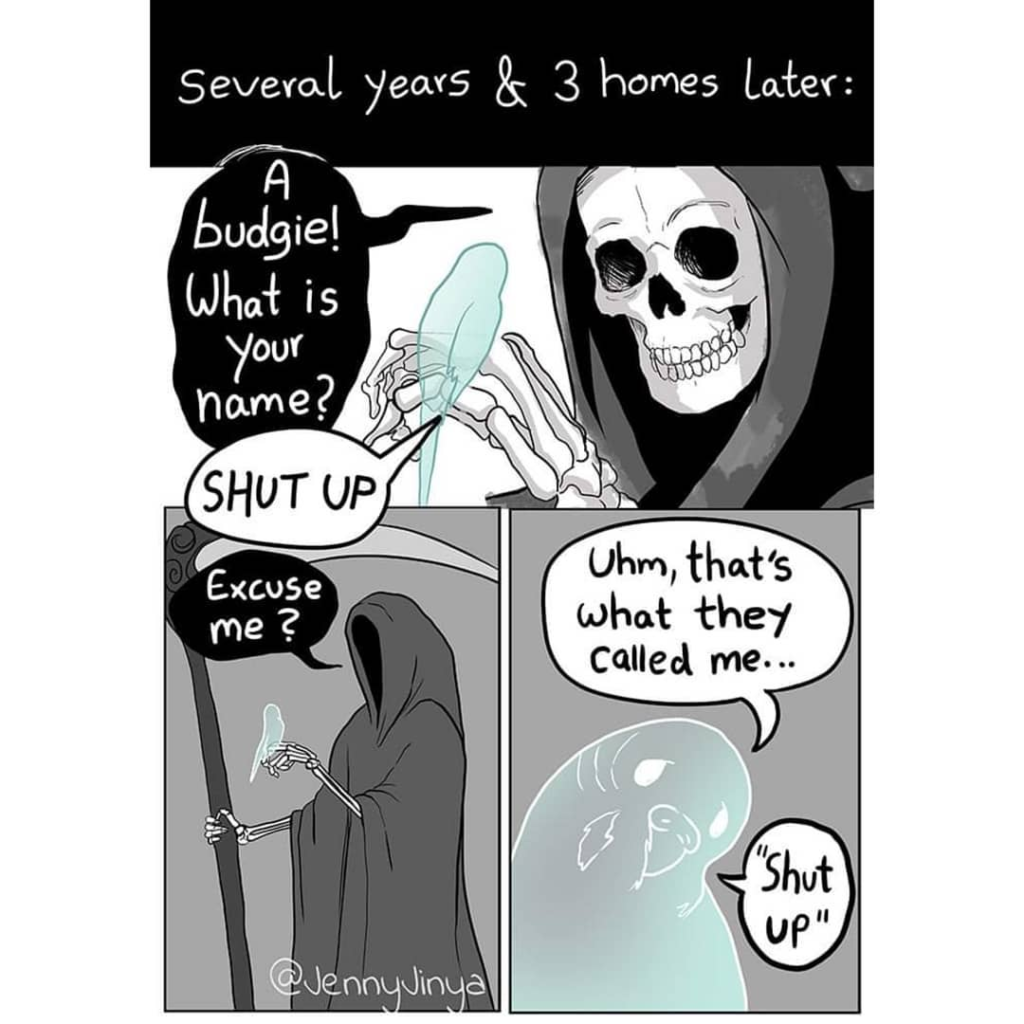
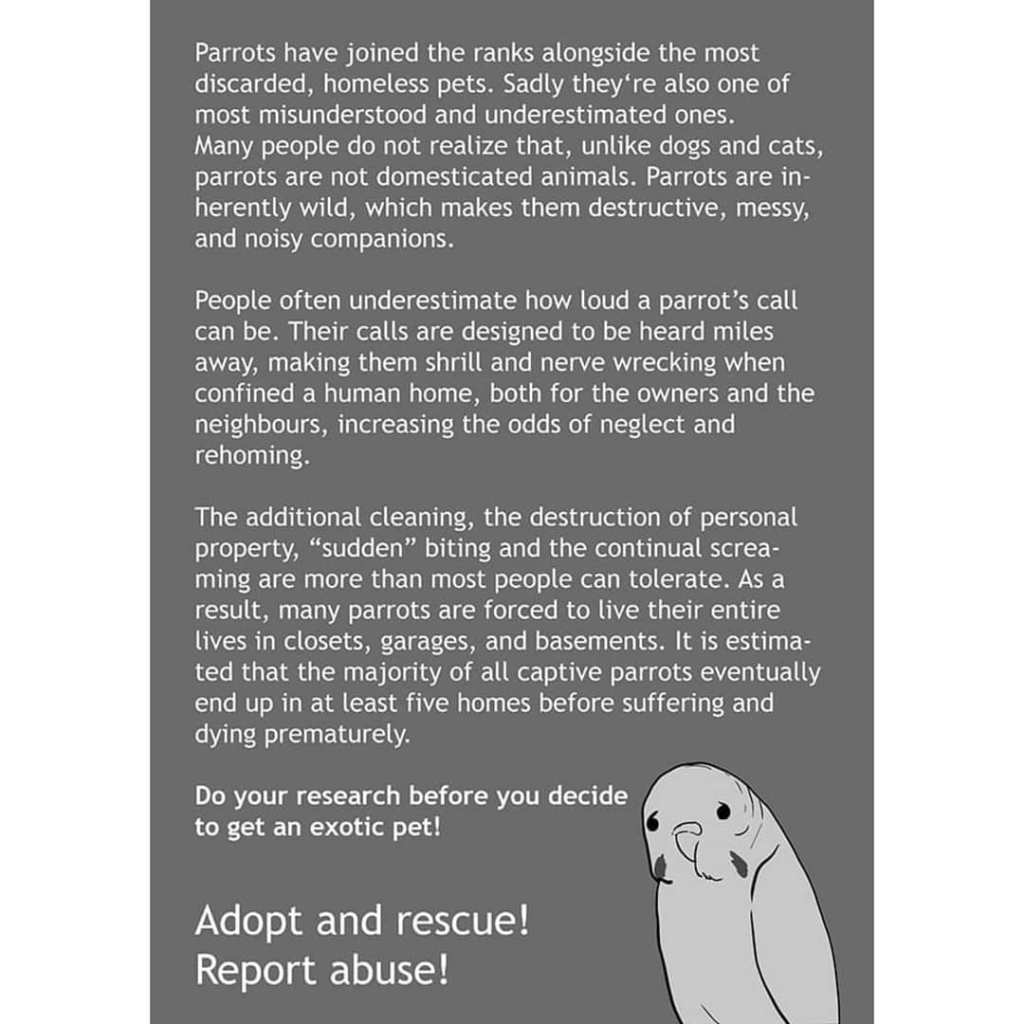
#2. How Do Whales Feel In Captivity?
The first panel of this comic tale features a beautiful whale swimming across a wide ocean environment. The second panel depicts a restricted cage with a single, lonely whale fin visible, illustrating the huge gap between their natural habitat and jail. Many people capture whales for display purposes, which can disrupt wild populations and contribute to conservation concerns. If you were bored during the Corona lockdowns, you understand the suffering of a whale kept in prison. Just think of the feelings animals would have if they had to live this way throughout their lives.


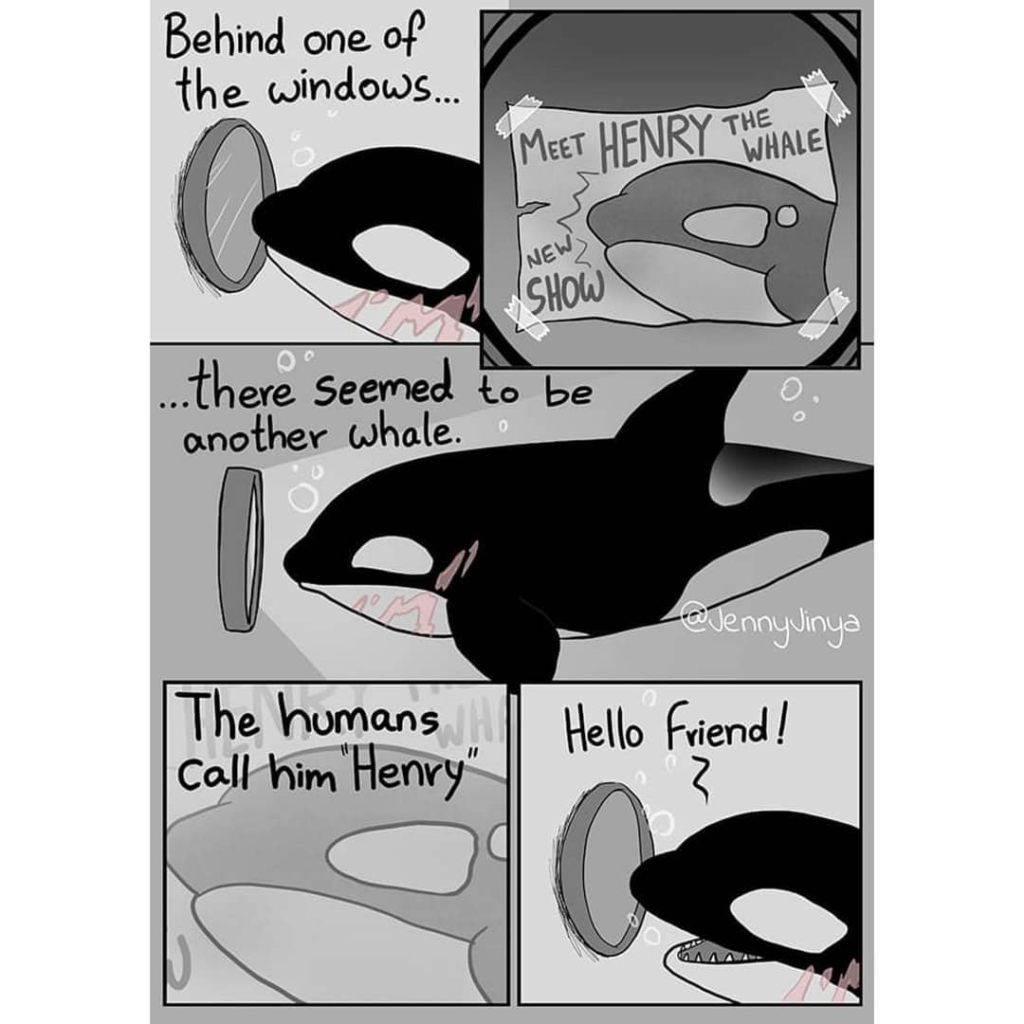







In conclusion, breeding whales and parrots in prison presents moral challenges, takes them out of their natural habitat, and negatively impacts their physical and emotional well-being. To understand and appreciate these amazing animals, there are far better approaches. A far better method to guarantee the wellbeing of whale populations is to support groups that attempt to keep them in the wild. So, next time, go for the alternate best option instead of captivity. Hopefully, you will learn from this blog and have a great experience.

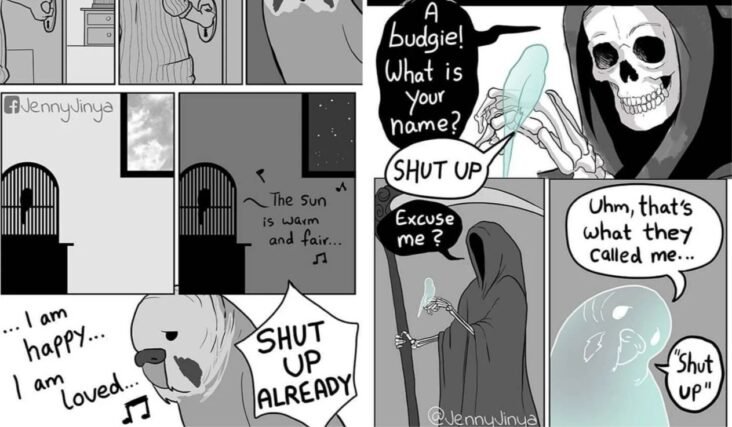
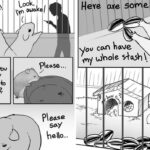

GIPHY App Key not set. Please check settings